import javax.swing.JPanel;
import javax.swing.JScrollPane;
@SuppressWarnings({ "unused", "serial" })
public class Window extends JPanel{
ArrayList lineList=new ArrayList ();
public void addLine(Line line) {
lineList.add(line);
}
public void paint(Graphics g) {
super.paint(g);
for(int i=0;i eages=new ArrayList();
}
Line.java:
package com.test;
//得到线的格式
import java.awt.Color;
�
import java.awt.Graphics;
public class Line {
private Color color;
private int x1, x2, y1, y2 ;
public Line(int x1, int y1, int x2, int y2, Color color) {
this.x1 = x1;
this.x2 = x2;
this.y1 = y1;
this.y2 = y2;
this.color = color;
}
public void draw(Graphics g) {
g.setColor(color);
g.drawLine(x1, y1, x2, y2);
}
}
Eage.java:
package com.test;
import com.test.Point;
//边,只记录目标节点的位置和权值
public class Eage{
public Eage(Point pointJ,double weight) {
targetPoint=pointJ;
this.weight=weight;
}
Point targetPoint;
double weight;//该边的权重
}
DV.java:
package com.test;
import java.util.ArrayList;
//DV 算法对周围节点进行信息交换和更新
public class DV {
public static Router[]R=new Router[Main.n];
int start;
int end;
public DV() {
}
public ArrayList
dv(ArrayListpoints,double[][]martix,int start,int
�Point(R[R[start].next[end]].x,R[R[start].next[end]].y);
points_2.add(p1);
points_2.add(p2);
i++;
}else {
Point p3 = new
Point(R[R[start].next[end]].x,R[R[start].next[end]].y);
points_2.add(p3);
}
start=R[start].next[end];
}
return points_2;
}
}
class Router{
int index;
int x;
int y;
boolean[] neighbour=new boolean[Main.n];
double[] cost=new double[Main.n];
int[] next=new int[Main.n];
public Router(){
for(int i=0;ithis.cost[k]+r.cost[i]){
this.cost[i]=this.cost[k]+r.cost[i];
this.next[i]=k;
if(this.neighbour[i]==false){
flag=true;
}
}
}
return flag;
}
public boolean changeAll(Router[] router){
�

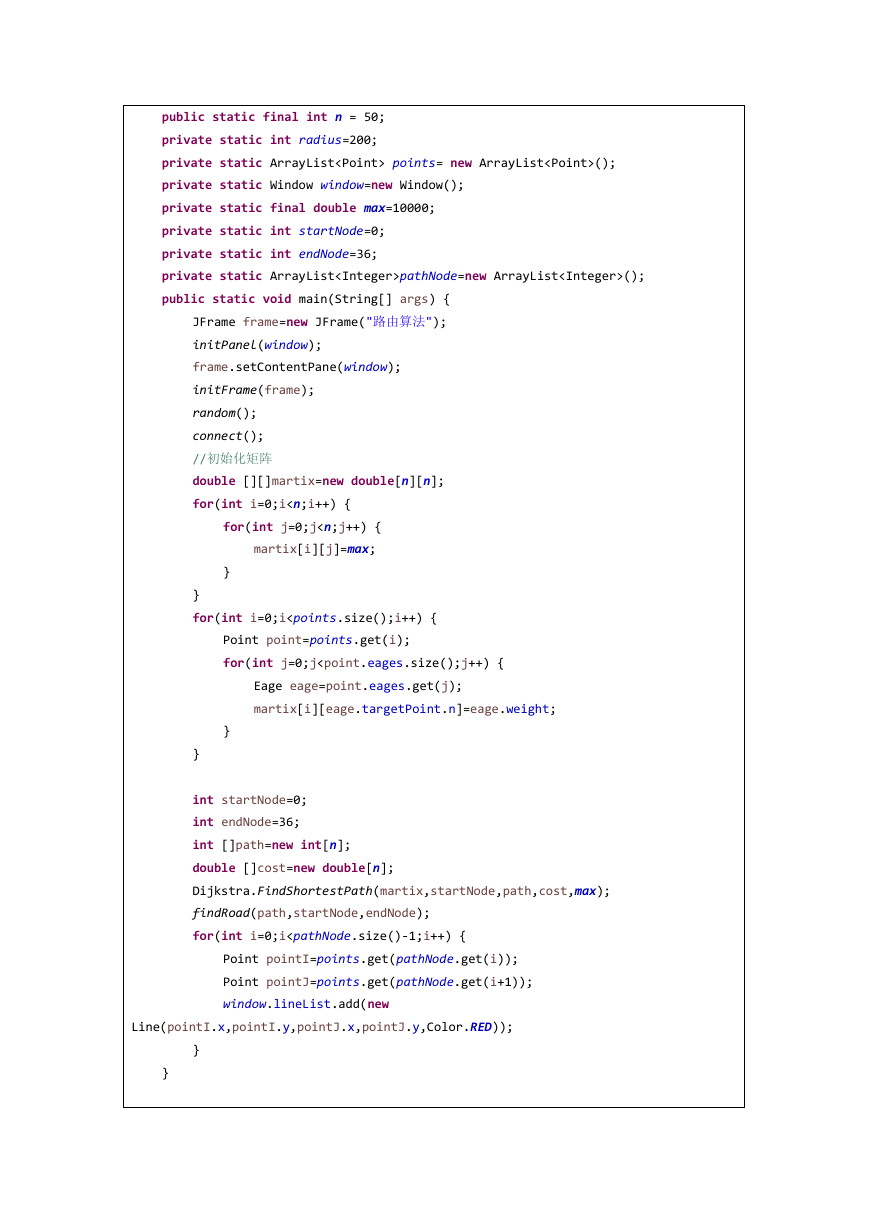

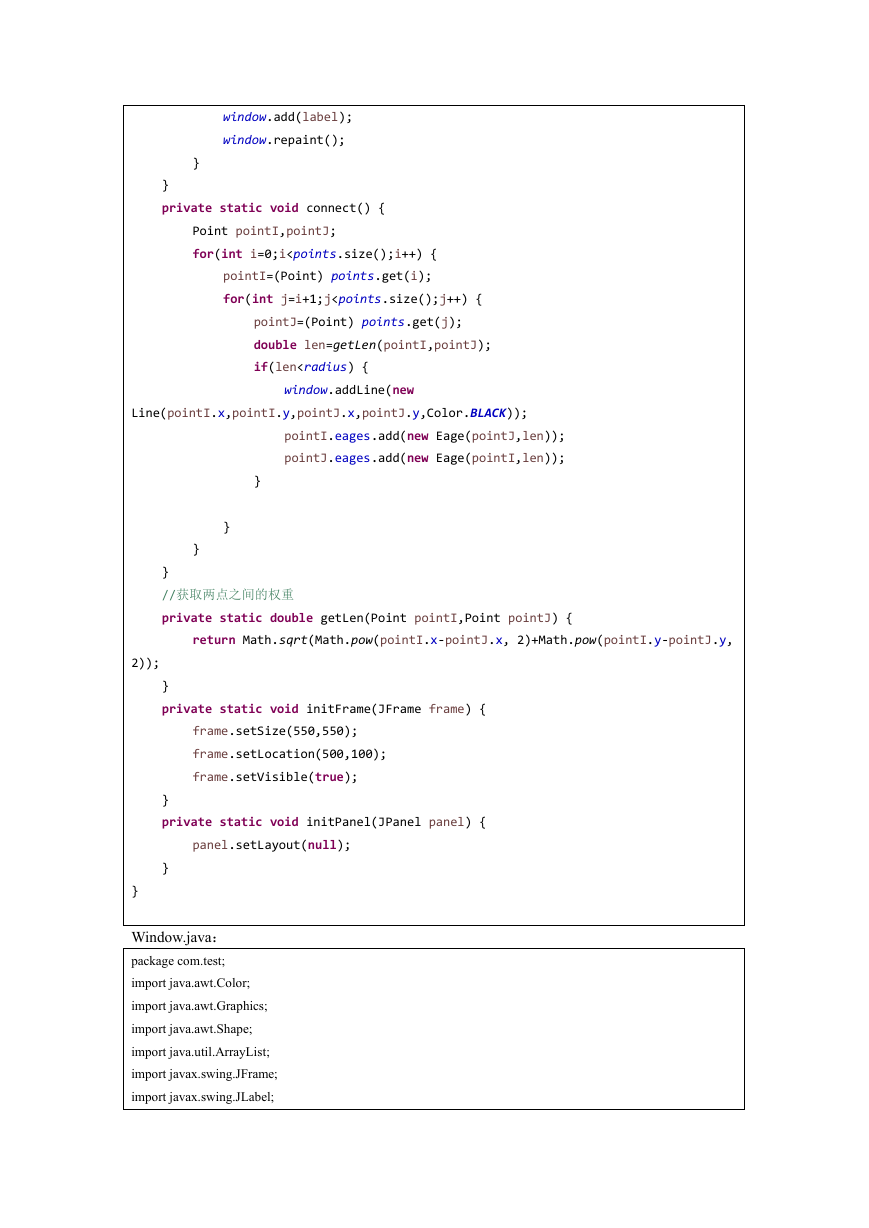
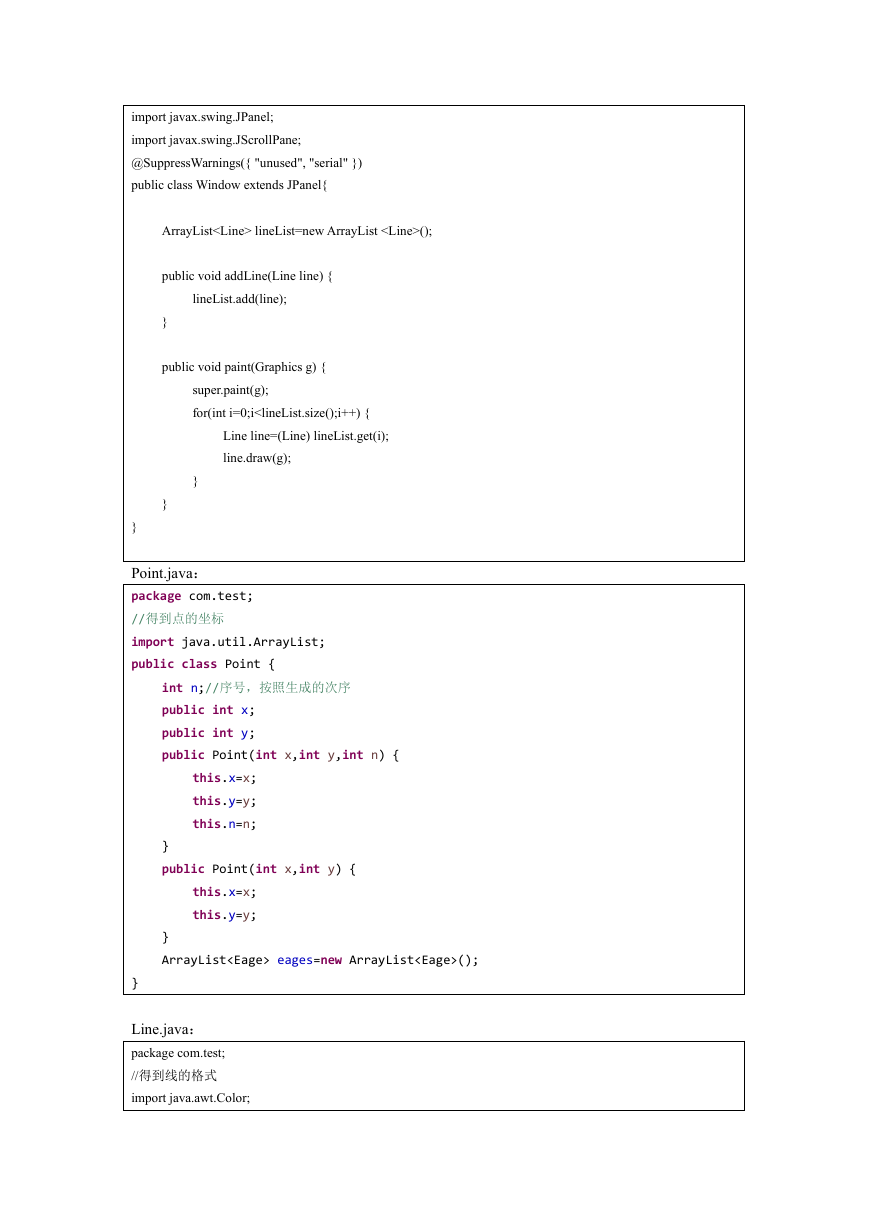
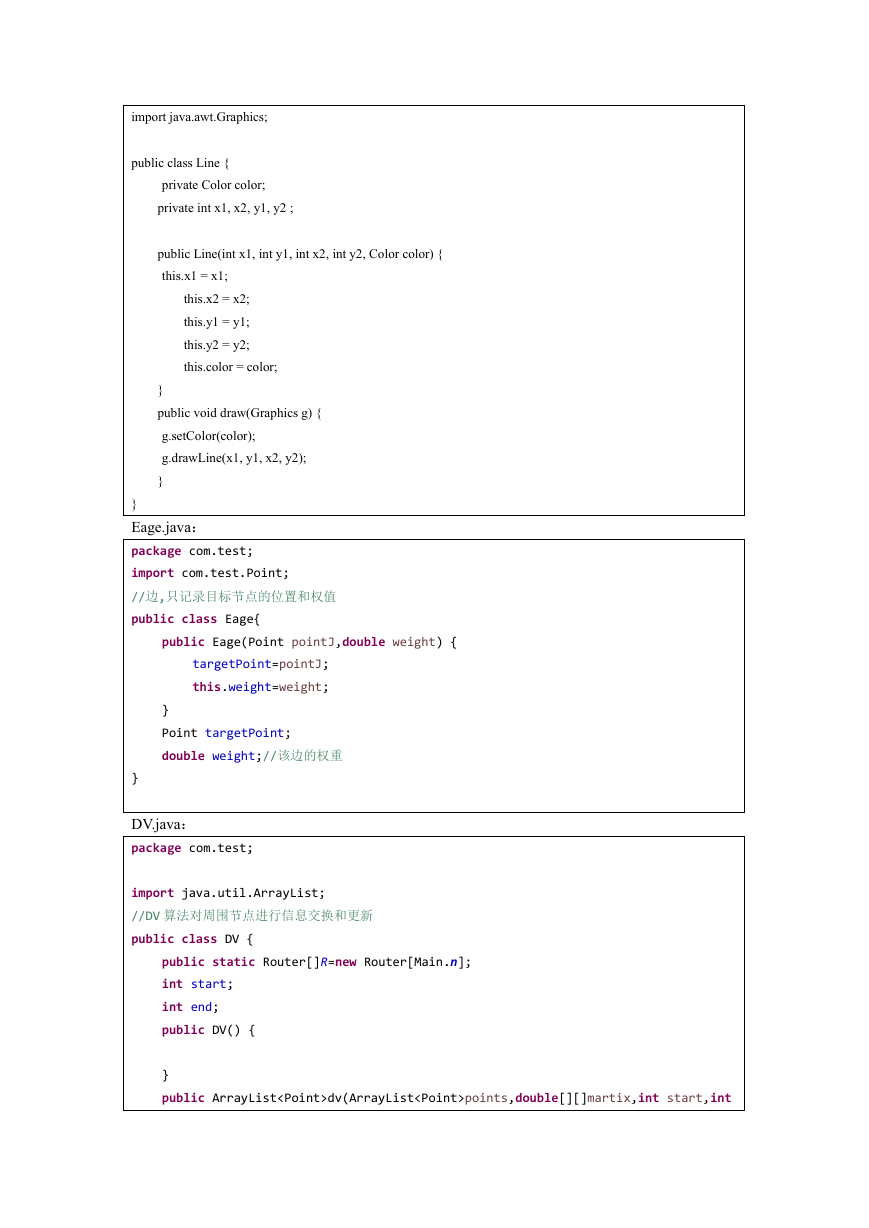
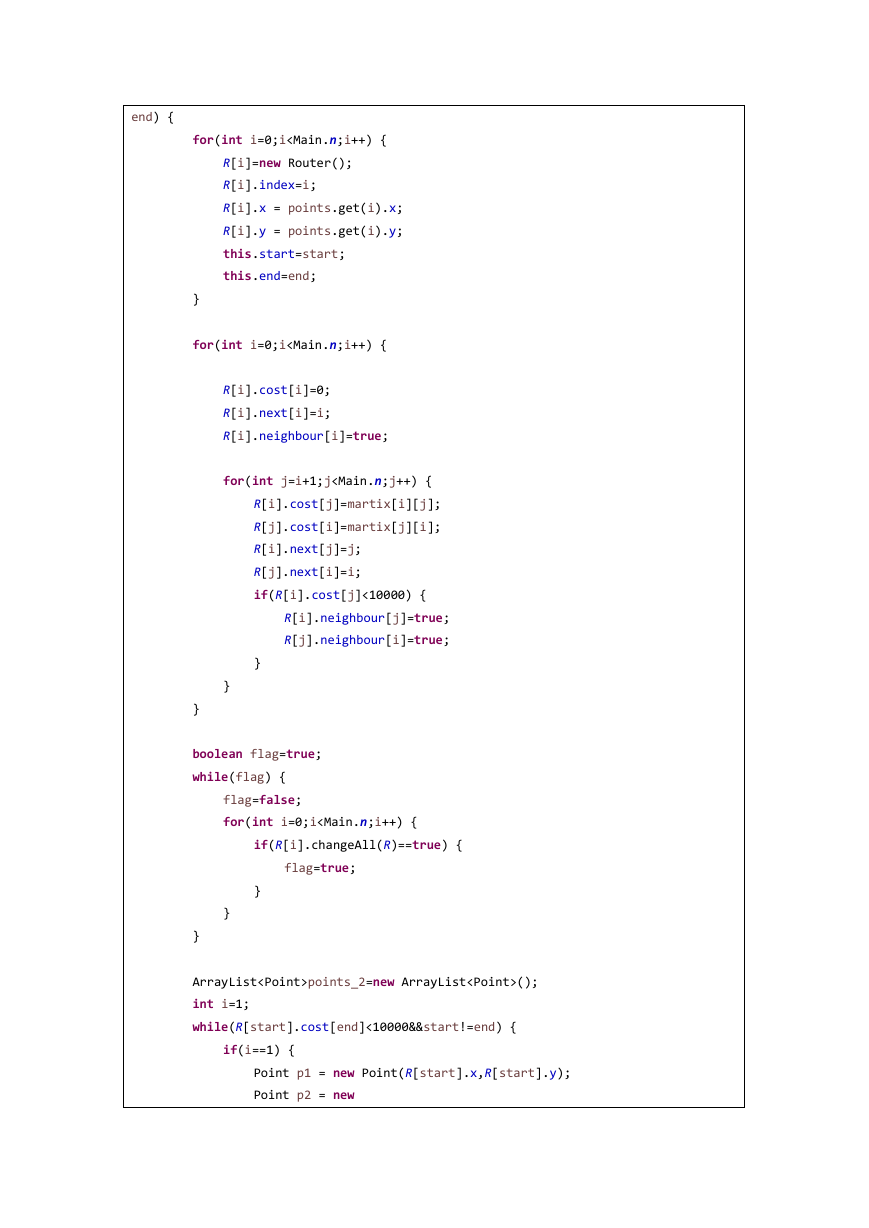
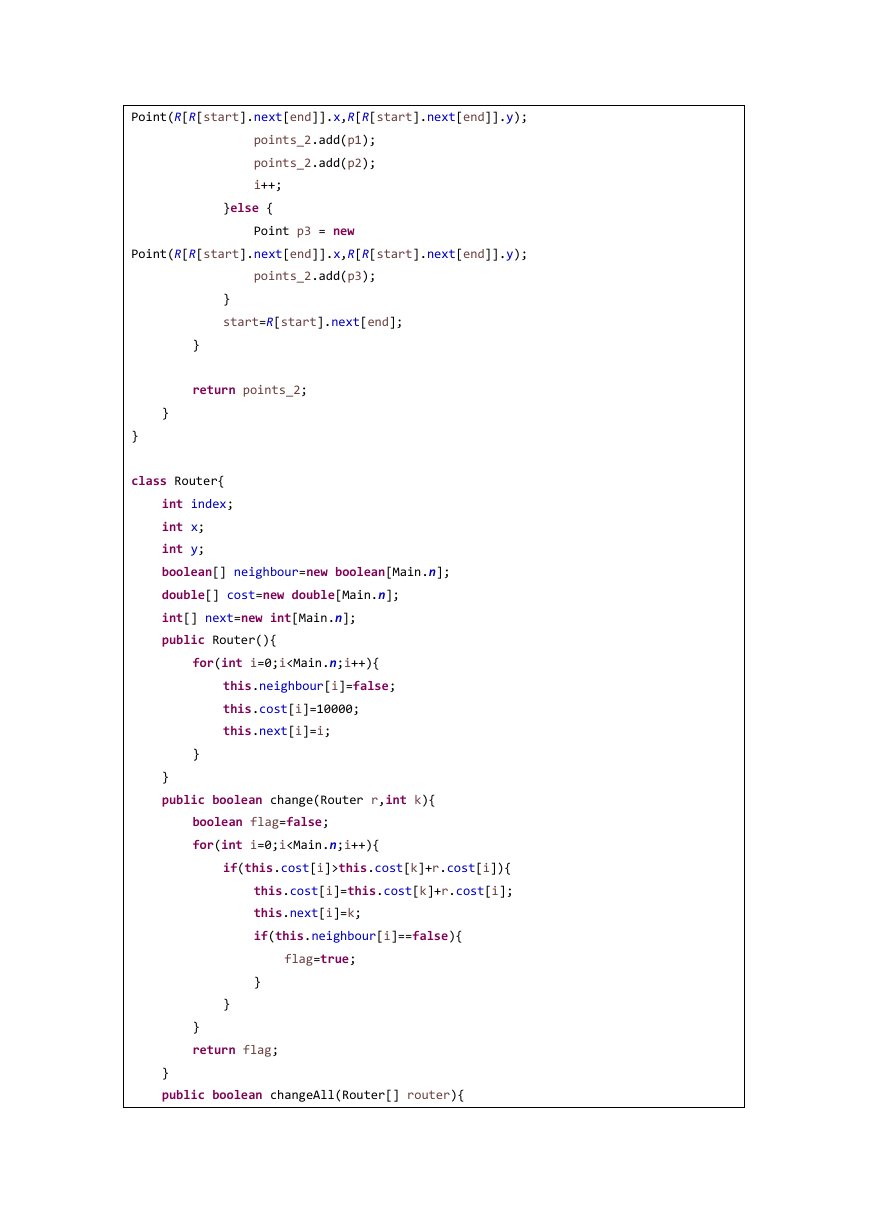








 2023年江西萍乡中考道德与法治真题及答案.doc
2023年江西萍乡中考道德与法治真题及答案.doc 2012年重庆南川中考生物真题及答案.doc
2012年重庆南川中考生物真题及答案.doc 2013年江西师范大学地理学综合及文艺理论基础考研真题.doc
2013年江西师范大学地理学综合及文艺理论基础考研真题.doc 2020年四川甘孜小升初语文真题及答案I卷.doc
2020年四川甘孜小升初语文真题及答案I卷.doc 2020年注册岩土工程师专业基础考试真题及答案.doc
2020年注册岩土工程师专业基础考试真题及答案.doc 2023-2024学年福建省厦门市九年级上学期数学月考试题及答案.doc
2023-2024学年福建省厦门市九年级上学期数学月考试题及答案.doc 2021-2022学年辽宁省沈阳市大东区九年级上学期语文期末试题及答案.doc
2021-2022学年辽宁省沈阳市大东区九年级上学期语文期末试题及答案.doc 2022-2023学年北京东城区初三第一学期物理期末试卷及答案.doc
2022-2023学年北京东城区初三第一学期物理期末试卷及答案.doc 2018上半年江西教师资格初中地理学科知识与教学能力真题及答案.doc
2018上半年江西教师资格初中地理学科知识与教学能力真题及答案.doc 2012年河北国家公务员申论考试真题及答案-省级.doc
2012年河北国家公务员申论考试真题及答案-省级.doc 2020-2021学年江苏省扬州市江都区邵樊片九年级上学期数学第一次质量检测试题及答案.doc
2020-2021学年江苏省扬州市江都区邵樊片九年级上学期数学第一次质量检测试题及答案.doc 2022下半年黑龙江教师资格证中学综合素质真题及答案.doc
2022下半年黑龙江教师资格证中学综合素质真题及答案.doc